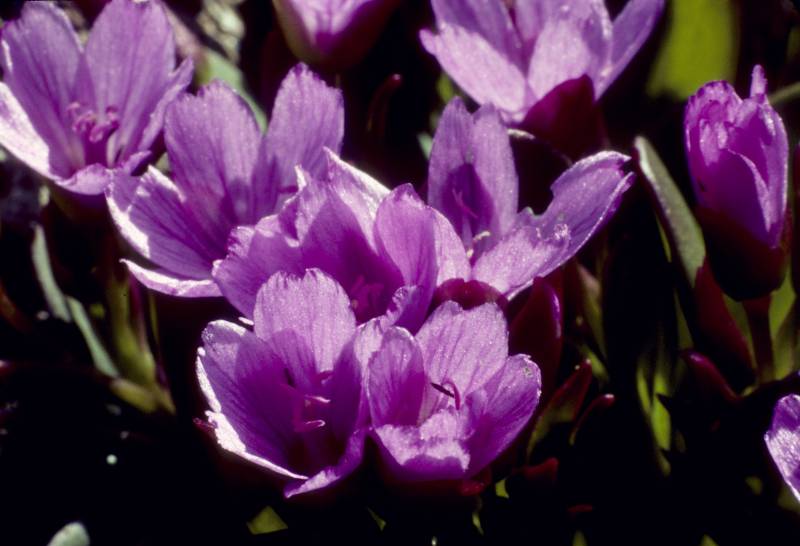Claytonia rosea
Claytonia megarhiza
fell-fields Claytonia
Basal leaves numerous, fleshy, forming rosettes, the blade obovate-oblanceolate, 5-25 mm. wide, narrowed to a petiole 1- to 3-times as long as the blade;
cauline leaves 2, opposite, reduced, linear.
Inflorescence a flat-topped raceme with 2-9 bracteate flowers;
pedicels 5-40 mm. long;
sepals 2, green or reddish, obtuse or acute, persistent, 4-9 mm. long;
petals 5, white to rose or deep pink, 7-15 mm. long;
stamens 5, attached to the base of the petals;
style 1, with 3 short stigmas.
Capsule ovoid, 4-5 mm. long.
Claytonia rosea
Claytonia megarhiza
Occurring east of the Cascades crest in the Wenatchee Mountains of Washington; in scattered locations from Northwest Territories to California, east to the Rocky Mountains.
- Local floras:
BC,
CA,
OR,
WA
- Local Web sites:
CalFlora,
CalPhotos,
Flora NW,
PNW Herbaria
WildflowerSearch
iNaturalist (observations)
USDA Plants Database
- LBJ Wildflower Center
- SEINet
- Plants of the World Online
- Encyclopedia of Life
- Wikipedia
- Google Image Search


